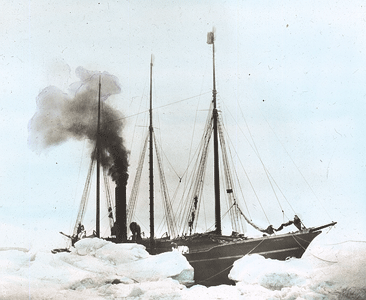1905- The Roosevelt

The S.S. Roosevelt in an ice pack
“The Roosevelt had engines capable of developing one thousand horse-power. They were of the inverted, compound type, driving a single eleven-foot propeller, and steam was supplied by two water-tube boilers and one Scotch boiler. Her sail plan is a light, American, three-masted schooner rig... As to construction: the strength of the hull must be such that it will resist the terrific pressure of the ice-floes, and keep its shape intact until the lifting of the ship bodily releases the pressure; such that is supported at each end only, or in the middle only, or thrown up on ice and resting upon her bilge, during the paroxysms of the floes, she will not be strained or injured; and such that she can ram the ice by the hour when necessary, without injury to seams of fastenings. It is a popular fallacy that steel is a suitable material for the construction of an Arctic ship… The elasticity, toughness and resiliency of thick wooden sides are essential in an Arctic ship.” - Robert E. Peary in Nearest the Pole, published in 1907
"S.S. Roosevelt in ice pack" by Donald B. MacMillan, 1909, Peary-MacMillan Arctic Museum Collections
